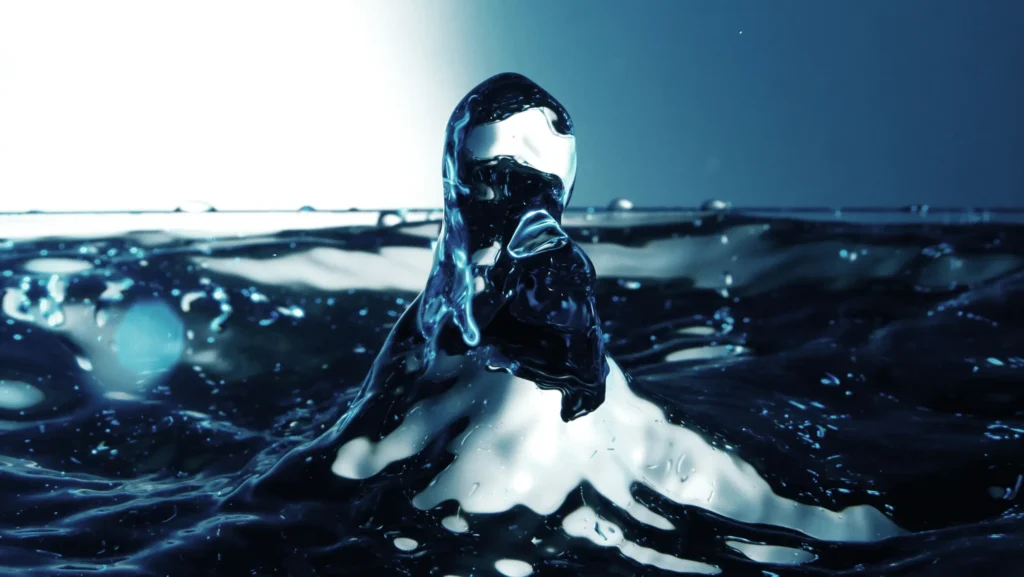Water is a fundamental necessity for daily living, but it’s also a utility expense that can significantly impact your personal finances if not managed carefully. With increasing water rates and rising consumption, finding ways to save on your water board expenses is crucial. By implementing simple changes and adopting eco-friendly habits, you can reduce your water consumption and save money while also contributing to environmental sustainability. This article will explore various strategies and practical tips to help you save on your water board expenses without compromising your daily needs or comfort.
Evaluate Your Current Water Usage
Before you start saving money on your water bills, it’s important to evaluate your current water usage. Review your water bills from the past few months to identify patterns and trends in your consumption. Look for any unusual spikes in usage, which may indicate leaks or inefficiencies in your plumbing system. Many water companies provide detailed breakdowns of your consumption, allowing you to see how much water you use daily or monthly. Additionally, invest in a water meter if you don’t already have one. Regularly checking your water meter helps monitor your consumption and detect any anomalies. Understanding your water usage patterns enables you to pinpoint areas where you can reduce consumption and make meaningful changes to save on your water board expenses.
Fix Leaks Immediately
One of the most effective ways to save on your water bills is by fixing leaks promptly. Even minor leaks can add up over time and result in significant financial losses. Common sources of water leaks include faucets, toilets, pipes, and showerheads. A dripping faucet, for instance, can waste gallons of water each month, while a leaking toilet can contribute even more substantial water loss. Regularly inspect your plumbing system for signs of leaks and address any issues as soon as possible. You can use leak detection tools, such as dye tablets for toilets, to identify hidden leaks. If you’re not comfortable fixing the problem yourself, hire a professional plumber to assess and repair any leaks in your plumbing system. Investing in leak prevention saves money in the long run and ensures the longevity of your water infrastructure.
Install Water-Saving Fixtures
Another effective way to reduce water consumption and save on your water board expenses is by installing water-saving fixtures in your home. Modern technology offers a variety of water-efficient fixtures that consume significantly less water without compromising performance. Consider replacing old faucets, showerheads, and toilets with WaterSense-certified fixtures, which are designed to use less water while maintaining functionality. WaterSense products meet strict environmental and performance criteria set by the Environmental Protection Agency (EPA). For example, a WaterSense-certified toilet can use up to 1.28 gallons of water per flush, compared to older models that may use 3 to 6 gallons. Installing low-flow showerheads can also save hundreds of gallons of water each year. Though the initial investment may be higher, the long-term savings on your water bills and environmental benefits make it a worthwhile decision.
Optimize Your Daily Water Habits
Saving money on your water board expenses often starts with simple changes in your daily habits. Being mindful of your water consumption and adopting water-saving habits can make a significant difference. For example, turning off the tap while brushing your teeth can save several gallons of water each day. Similarly, taking shorter showers and using a water-saving showerhead can help reduce water usage substantially. Another important habit is washing full loads of laundry or dishes instead of small loads. Whether you use a washing machine or a dishwasher, waiting until you have a full load ensures that water is being used efficiently. Additionally, only running these appliances during off-peak hours can also contribute to cost savings, as it may result in lower water and energy rates. Simple practices like these not only reduce your water bills but also promote responsible water consumption and environmental consciousness.
Use Rainwater Harvesting Systems
Rainwater harvesting is an innovative and eco-friendly way to save money on water board expenses while promoting environmental sustainability. Installing a rainwater harvesting system allows you to collect and store rainwater for various household uses, such as watering plants, washing cars, or flushing toilets. Rainwater is free and can significantly reduce your reliance on municipal water supply. There are various types of rainwater harvesting systems available, ranging from simple rain barrels to more complex filtration and storage setups. Even a small system can help save thousands of gallons of water over a year. While the initial installation cost may be an investment, the long-term savings on your water bills and the positive environmental impact make it a worthwhile choice. Additionally, some local governments and municipalities offer incentives and rebates for homeowners who install rainwater harvesting systems, further reducing your upfront costs.
Practice Water Recycling and Reuse
Water recycling and reuse are practical methods to save money and reduce your water consumption. You can recycle water within your home by reusing wastewater for non-potable purposes, such as watering plants or flushing toilets. For example, you can place a bucket in your shower to collect water while you wait for it to heat up. This collected water can be used for plants or cleaning purposes. Another effective method is to install a greywater system. Greywater refers to wastewater generated from sinks, showers, and washing machines, which can be treated and reused for irrigation or toilet flushing. By recycling water within your home, you reduce your demand for fresh water from your water board and save on your monthly bills. Implementing a greywater system not only conserves water but also minimizes the environmental impact of wastewater discharge.
Create a Water Budget
Creating a water budget is a strategic way to control your water expenses and ensure that you stick to your financial goals. Start by analyzing your previous water bills and identifying areas where you can cut back on consumption. Set realistic monthly water usage goals and allocate a specific budget for your water expenses. Monitor your water consumption regularly and compare it with your budget to track your progress. If you notice any discrepancies or unexpected increases in usage, investigate the cause and address it immediately. Having a water budget encourages mindful consumption and helps prevent wasteful habits. Additionally, setting a budget allows you to prioritize spending and allocate funds for essential needs, savings, and other financial goals. By sticking to your budget, you can achieve financial stability and reduce the overall impact of water expenses on your personal finances.
Educate Your Household Members
Saving money on water bills requires the cooperation and commitment of everyone in your household. Educating your family members about the importance of water conservation and the impact of wasteful habits on finances and the environment is crucial. Teach your children simple habits, such as turning off the tap while brushing their teeth, taking shorter showers, and using water-saving fixtures. Encourage open communication about water consumption and make it a family goal to reduce water waste. Create challenges and competitions within your household, such as a water-saving contest, to motivate everyone to find creative ways to save water. The collective effort of your household members can result in significant savings and instill lifelong habits of responsibility and environmental consciousness.
Invest in Water-Saving Appliances
Investing in water-saving appliances is a proactive way to reduce your water consumption and save on your water board expenses. Many modern appliances, such as washing machines, dishwashers, and refrigerators, are designed with water efficiency in mind. Look for ENERGY STAR-certified appliances, which meet strict energy and water efficiency guidelines set by the Environmental Protection Agency (EPA). An ENERGY STAR washing machine, for example, uses significantly less water than older models, without compromising performance. Similarly, a water-efficient dishwasher uses less water per cycle while still delivering effective cleaning results. Although these appliances may have higher upfront costs, they offer long-term savings on water bills and energy consumption, making them a smart financial choice. Additionally, these appliances often come with warranties and maintenance features that extend their lifespan and performance.
Apply for Rebates and Incentives
Many municipalities, local governments, and water companies offer rebates and incentives to encourage residents to adopt water-saving measures. These incentives may include rebates for installing water-efficient fixtures, rainwater harvesting systems, or greywater recycling systems. Some water companies offer financial rewards for reducing consumption below a certain threshold during peak seasons. Check with your local water board or municipality to find out what programs and incentives are available in your area. Take advantage of these opportunities to save money on your water expenses while contributing to community-wide water conservation efforts. Additionally, inquire with local environmental organizations and community programs, as they often offer resources, information, and financial assistance for eco-friendly water-saving initiatives.
Review and Optimize Water Contracts
Finally, review your water board contract and explore opportunities to optimize your water service. Contact your water supplier to inquire about available plans and services that offer better rates or savings. Some companies offer tiered pricing structures where the cost per gallon decreases as consumption increases. Additionally, negotiate payment plans or fixed rates that align with your budget and financial goals. Understand your contract terms, including peak and off-peak rates, minimum consumption charges, and discounts. By optimizing your water contract, you can reduce unnecessary costs and ensure that your water expenses remain manageable. Don’t hesitate to seek advice from financial advisors or community resources that specialize in utility savings, as they can provide tailored solutions and insights into optimizing your water board expenses.
In conclusion, saving on water board expenses requires a combination of practical habits, eco-friendly technology, strategic planning, and community initiatives. By evaluating your water usage, fixing leaks, installing water-saving fixtures, practicing water recycling, and budgeting wisely, you can significantly reduce your water bills. Educating your household, investing in modern appliances, and taking advantage of incentives and rebates further enhance your savings. These strategies not only help maintain a stable personal financial outlook but also promote environmental responsibility and sustainable living practices. Taking proactive steps to save water benefits your wallet, conserves a precious natural resource, and contributes to a more sustainable and responsible community. Embracing these practices ensures financial efficiency while fostering a commitment to a cleaner and more environmentally conscious future.




